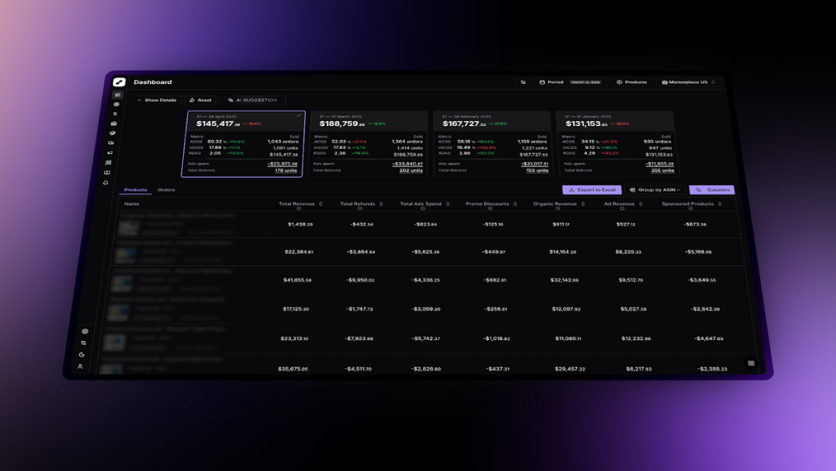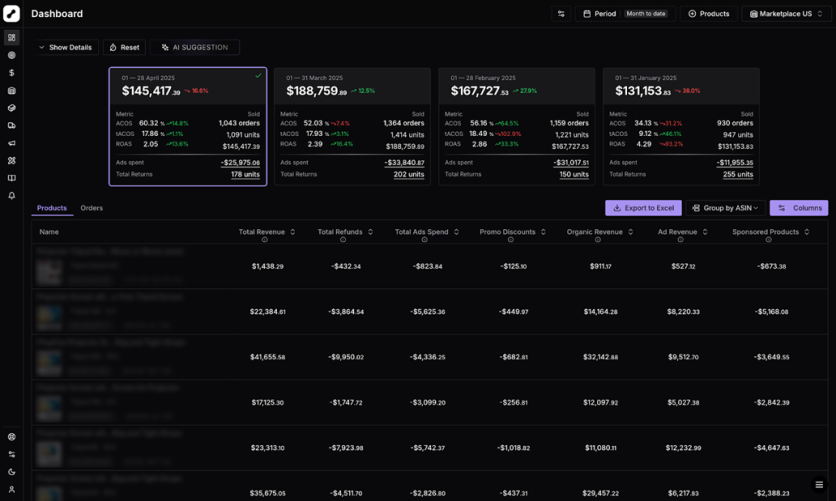
Growth in e-commerce is relentless. Every minute spent on manual work isn't just lost—it's a chance for your competition to race ahead. Without real-time visibility, your business risks costly decisions and missed opportunities at the moments that matter most.
Soaring sales and escalating customer expectations are the baseline in today's digital landscape. Yet, many SMBs still rely on outdated, manual processes, putting them at a serious disadvantage. Real-time control has become foundational, not just for scaling but also for surviving in today's competitive landscape.
There's a reason industry leaders often say:
"Every company is now a technology company." — Satya Nadella, CEO of Microsoft
For SMBs, this means moving from reactive to real-time operations. Automating financial, inventory, and operational tasks isn't just a matter of convenience—it's becoming essential for agility, clarity, and sustainable growth in competitive markets.
My name is Roman Gagloev. Over the years, I've helped build and scale e-commerce operations across continents, experiencing firsthand our industry's daily realities and opportunities. In this article, I'll share what I've learned about moving from manual chaos to intelligent systems and how AI-powered ERP redefines what's possible for e-commerce businesses everywhere.
Why E-Commerce Sellers Can't Afford Manual Operations Anymore
According to the U.S. Small Business Administration (SBA), small businesses are not only the backbone of the economy, representing 99.9% of all U.S. businesses, but their participation in e-commerce is surging year after year. It also highlights that over 30% of American small businesses generate significant revenue from online sales. Their pivot to e-commerce has unlocked access to broader markets and revealed the limits of traditional tools.
For many e-commerce sellers expanding into new markets, early challenges often include inventory shortages, procurement delays, and limited financial visibility. When data is siloed across platforms, even basic questions become difficult to answer in real time:
- Can we meet next week's demand surge?
- Are ad campaigns cannibalizing margin?
- Where are we leaking cash across fulfillment?
These are common pain points for sellers. Technology that unifies data streams doesn't just help—it transforms decision-making from delayed guesswork into precise execution.
How AI Tools Are Replacing Gut Instinct in E-Commerce
Modern AI-powered ERP systems offer a unified source of truth, something manual spreadsheets never could. They integrate real-time data from inventory, sales, marketing, and finance, eliminating lag and guesswork.
A comprehensive review published in SSRN identified thirteen areas where AI transforms ERP: from automating back-office processes to enabling predictive analytics and decision support through cognitive computing. PwC's research echoes this, showing that retailers embracing AI in logistics and operations drive higher profitability through precision and automation.
That same logic is driving a new generation of ERP tools designed to do more than just aggregate data—they aim to identify operational blind spots proactively before they impact performance. These advanced platforms include features that alert sellers to low-stock SKUs, cash flow shortages, and underperforming advertising campaigns, empowering them to address issues before they escalate. Their predictive capabilities leverage historical trends, seasonal patterns, and conversion metrics to optimize inventory reordering, stock levels, and marketing investments. Unlike generic ERP solutions, these tools are crafted with deep e-commerce expertise, embedding practical operational insights into their core functionalities, redefining modern operational efficiency.
3 'Expensive' Problems E-Commerce Sellers Keep Ignoring
SMBs typically wrestle with three interlinked challenges. AI-powered ERP addresses each directly:
Problem 1: You're Making Decisions without a Real-Time Dashboard
Without real-time insight, SMBs risk making costly missteps. For example, many allocate ads or product spending without clear visibility into profitability by channel. ERP platforms that consolidate sales, returns, ad spend, and logistics in one view—updated continuously—help business owners move from reactive to informed.
Business owners get instant clarity and can act quickly. This isn't just about monitoring—it's about confidence in every decision. A McKinsey study confirms that companies using advanced digital finance tools can realize up to 20% improvement in profitability, as better visibility leads to smarter, data-informed actions.
Problem 2: Stockouts Are Draining Your Cash Flow
Inventory issues—whether from stockouts or overordering—can deplete capital and lead to diminished visibility and ranking in product search results.
Many sellers encounter disruptions when manual forecasting or disconnected systems fail to adapt to fluctuating channel demand.
Modern ERP platforms leverage historical SKU data, external signals, and seasonality trends to enhance inventory threshold predictions, effectively preventing overstock or shortages. These systems incorporate advanced forecasting tools that proactively identify inventory risks, ensuring seamless sales and operational continuity.
Problem 3: You're Spending on Ads without Seeing Profit
Many SMBs struggle to measure the true return on their advertising investments, often due to a lack of integration between ad performance and actual profitability. This gap in visibility results in wasted budgets and missed growth opportunities.
ERP systems that link advertising spend with sales data and fulfillment costs deliver critical clarity. These platforms provide campaign-level insights, enabling sellers to discern effective strategies and optimize advertising as a measurable, responsive driver of growth.
Why SMBs Must Adopt AI Now

What motivates small and medium-sized businesses to adopt AI tools? A recent ScienceDirect study found that entrepreneurial orientation—being proactive, innovative, and willing to take calculated risks—directly correlates with successful AI adoption in e-commerce. Customer-centricity is equally important: the most successful businesses use AI to enhance customer experience, not just internal processes.
This philosophy—developing tools grounded in market demands and seller requirements—has shaped the most impactful ERP solutions. Rather than relying on theoretical models, these platforms evolve through direct operational data feedback. For example, one company utilizing an AI-powered ERP system achieved a 30% reduction in stockouts and minimized advertising waste by aligning analytics with real-time marketplace performance.
These outcomes demonstrate how AI, when paired with usability and accessibility, can drive real operational improvement.
While retail banking leads the way, the underlying principle holds true for e-commerce: AI-enabled tools allow small businesses to streamline operations and convert efficiency into measurable financial gains.
What Happens When Sellers See the Full Picture
Financial transparency has become a necessity in the highly competitive e-commerce landscape, where operating without clear insights is no longer viable. Cloud-based ERP systems provide real-time dashboards, automated reconciliations, and predictive analytics, surpassing the capabilities of traditional accounting software.
These platforms enable business owners to:
- Track margins across product lines and sales channels.
- Monitor advertising spend and its returns in real time.
- Detect cash flow gaps before they escalate into crises.
- Optimize procurement and inventory cycles based on dynamic demand patterns.
Drawing from my experience as a former CFO and current CEO, I have seen firsthand the critical importance of these capabilities. When our company achieved 50% year-over-year growth, we depended on advanced ERP tools to streamline procurement schedules, advertising campaigns, and logistics planning.
This experience aligns with broader industry findings; for example, McKinsey's research into the financial services industry demonstrates that businesses leveraging digital transformation and AI in finance achieve sustained revenue growth and operational resilience, even during economic uncertainty.
ERP as a Catalyst for Economic Growth
AI-driven ERP platforms extend their impact beyond individual companies, contributing significantly to economic resilience and growth. The U.S. government acknowledges that small and medium-sized businesses (SMBs) are vital drivers of job creation and innovation. By providing these businesses with advanced, accessible tools, these platforms help level the competitive landscape.
Modern ERP systems bridge the technology gap for entrepreneurs, granting smaller enterprises access to sophisticated solutions previously exclusive to large corporations. These tools are adopted by companies across regions, including the United States, Europe, and Asia, enabling optimized processes that foster business expansion, job creation, and enhanced community value.
For instance, one e-commerce brand achieved a 5–7% market share in its niche on Amazon USA and 15–30% in other major markets. Its revenue grew from $1.1 million to over $3 million within two years, maintaining a 50% annual growth rate. These outcomes demonstrate the transformative potential of equipping SMBs with robust ERP systems.
Practical Steps for E-Commerce Owners
If you're running or scaling an online business, consider these actionable steps:
- Integrate your data: Avoid the trap of disconnected spreadsheets. Use an ERP system that combines sales, inventory, marketing, and finance in one platform.
- Invest in predictive analytics: Manual forecasting is rarely accurate. AI tools can help you anticipate trends and adjust quickly.
- Monitor financial health in real time: Don't wait for month-end reports. Real-time dashboards make it easier to spot issues early and act on opportunities.
- Focus on the customer experience: AI isn't just for back-office efficiency. Use it to understand and respond to customer behavior for better retention and higher satisfaction.
- Adopt mobile solutions: Ensure you can access business insights and take action from anywhere. Mobile-first platforms are quickly becoming the norm.
The Future of E-commerce Operations
The future of e-commerce will favor data-driven, agile businesses. AI-powered ERP systems will continue to evolve, offering advanced automation, deeper value chain integration, and smarter decision-making capabilities. These advancements will enable SMBs to compete effectively in a complex market, prioritizing operational clarity and customer focus.
About the Author:
Roman Gagloev is the Co-founder and CEO of Propamp.ai and the CFO of PropVue LLC. With a background in international finance and software development, he has led e-commerce operations across global markets. Roman specializes in building AI-powered tools that help small businesses optimize inventory, gain financial clarity, and scale confidently. His work is recognized for advancing digital solutions that empower entrepreneurs and support innovation in today's economy.
References:
- Aljarboa, S. (2024). Factors influencing the adoption of artificial intelligence in e-commerce by small and medium-sized enterprises. International Journal of Information Management Data Insights 4(2): 100285. https://www.sciencedirect.com/science/article/pii/S2667096824000740
- Pokala, P. (2024). Artificial intelligence in enterprise resource planning: A systematic review of innovations, applications, and future directions. International Journal of Research in Computer Applications and Information Technology 7(2): 1276–1289. https://papers.ssrn.com/sol3/papers.cfm?abstract_id=5069377
- McKinsey & Company. (2022). The tech transformation imperative in retail. McKinsey & Company. https://www.mckinsey.com/industries/retail/our-insights/the-tech-transformation-imperative-in-retail
- McKinsey & Company. (2024). The state of retail banking: profitability and growth in the era of digital and AI. McKinsey & Company. https://www.mckinsey.com/industries/financial-services/our-insights/the-state-of-retail-banking-profitability-and-growth-in-the-era-of-digital-and-ai
- PwC. (2025). AI and the retail transformation: the future of retail with Microsoft Cloud and PwC. PwC. https://www.pwc.com/gx/en/services/alliances/microsoft/ai-retail-transformation-future.html
- U.S. Small Business Administration. (2024). 5 small business trends to watch in 2025. U.S. Small Business Administration. https://www.sba.gov/blog/2024/2024-11/5-small-business-trends-2025
ⓒ 2025 TECHTIMES.com All rights reserved. Do not reproduce without permission.







